Jedi technology mobile developer: how to monetize the application in 2019?
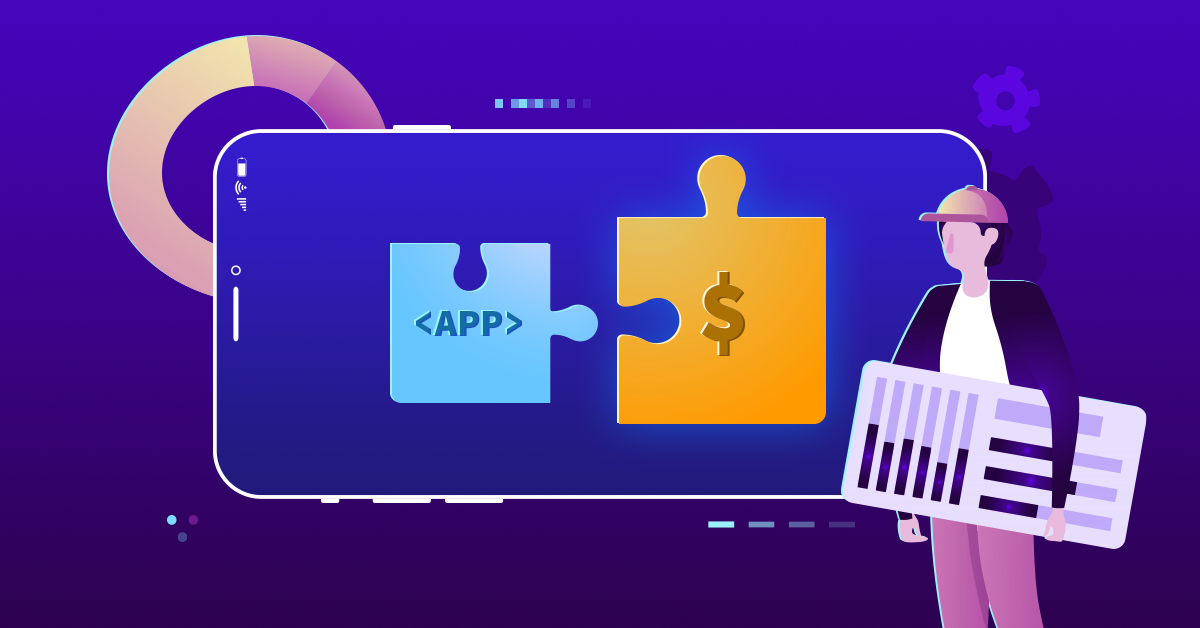
How much effort and money do you need for the application to start generating revenue? Why are mobile developers never millionaires, and where is the glass ceiling in advertising profit? The guys from Appgrow analyzed 320+ applications and told about the main mistakes of the developers, who cut off to them up to 40% of advertising profits.
Despite discouraging statistics, mobile apps can still be profitable. But to create an application to cut money from it, without really investing and get a steady income will not work. Applications are now the most powerful user acquisition tool. Even if your application is not an add-on to a larger software or brand, you still need to strive for continuous growth and development.

')
Surprisingly, almost 54% of all applications do not have a decent monetization strategy. There are several reasons for this phenomenon: some of them are created by non-profit organizations (for example, Wikipedia), brands or corporations. But the main reason may be the fact that the vast majority of applications have not yet reached a decent amount of downloads in order to correctly apply at least one monetization strategy. The better your ASO strategy, the more likely it is to get users in the first couple of weeks after launching the application:
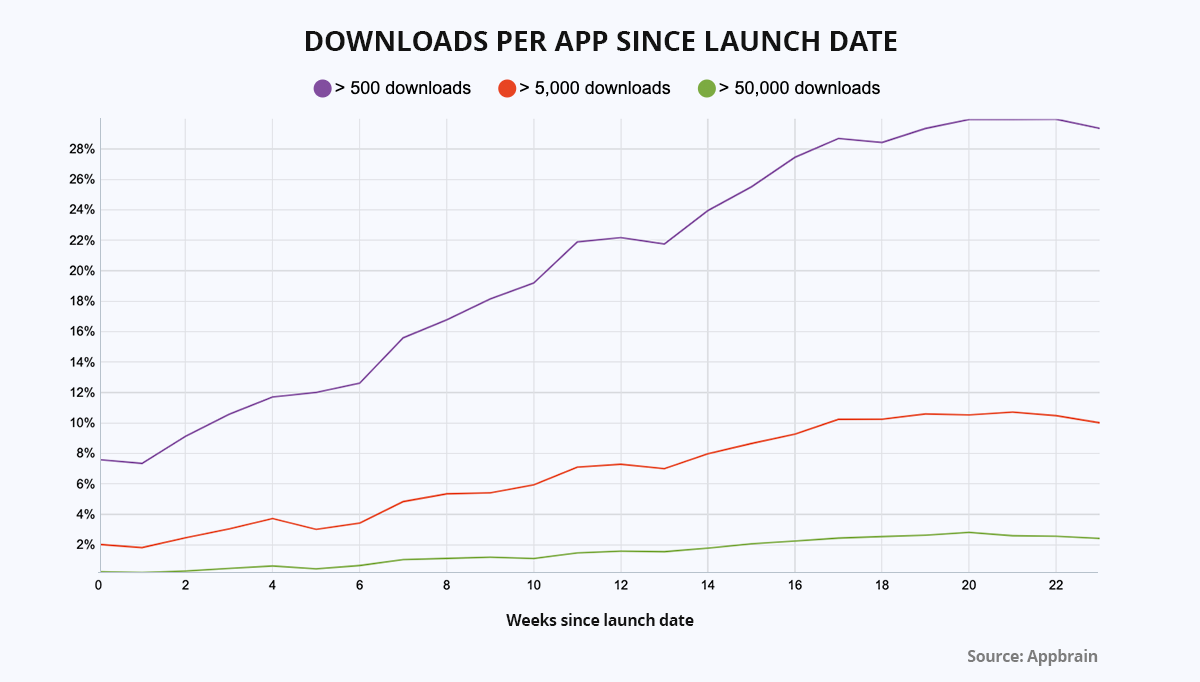
Three reasons that block advertising revenue
When monetizing applications, there is always a risk to rest against the glass ceiling - when the profit from the application stays at the same level, whatever you do. Sometimes the reason is in the quality of the application, but more often - in the way the developer monetizes it.
Reason 1. Overcompetitive niche + low user loyalty
We are all nostalgic for the times when the needs of the user of a mobile device were limited to games like "Snake" and "Tetris". When the mobile application universe was just beginning to form in the market, users downloaded one application and used it for years.
Now thousands of applications are added to the appstores every day and the chance that your app will hit the top or become viral like Pokemon Go is small. For unknown applications with a “big idea” to anyone, the only chance for recognition is the creation of an infopowder and an article in top tech editions such as TheVerge, Tech Crunch and others. But even the editor is easier to convince of the uniqueness of the application than to convey it to users.
The user does not forgive bugs in the UX or functionality, and if you also show him an advertisement at the wrong time, he is not too lazy to find the application in the appstore and put him in the rating. Application rating is extremely important for developers, it directly affects the number of further installations (here is an example for Google Playstore):
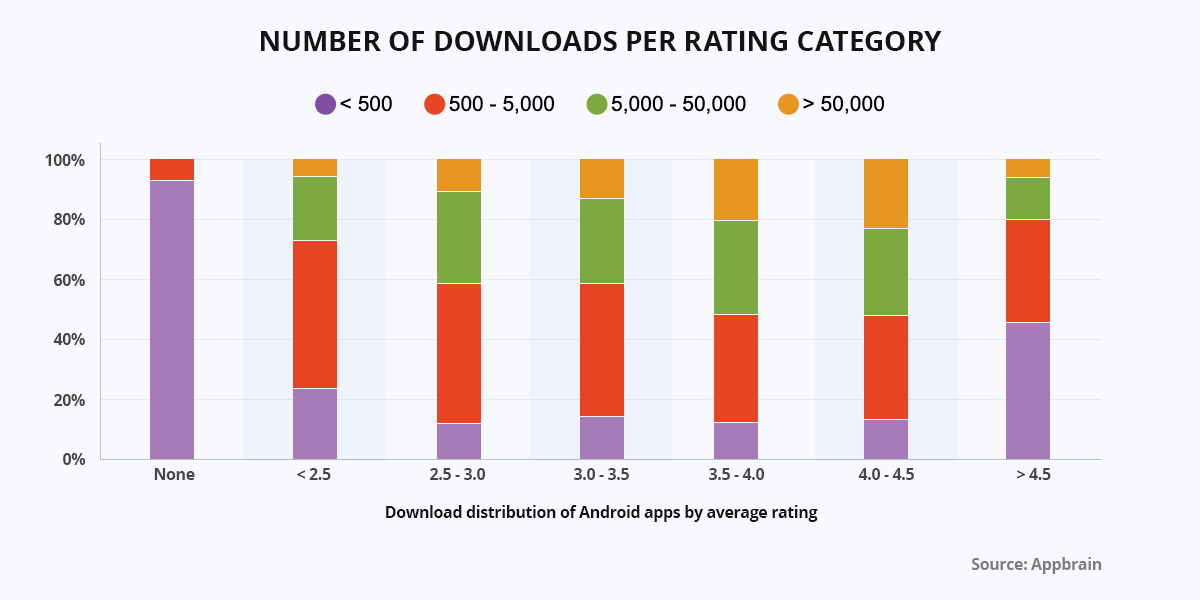
Reason 2. Incorrect monetization model.
When creating an application, developers often focus on more successful applications in a similar niche, or copy the main idea of the application from those who have already thundered on the app store. There is one vivid example of a friend who created a quiz app for children of 9-11 years based on the school curriculum, showed them banner and interstitial advertising, and set a price of $ 0.99 for a package of additional tips and level preservation. After a couple of months, the parents of these children found that once they paid a dollar for the tips, they continued to automatically pay for them each time (the children took the tips all the time), deleted the application, and some even sued.
He used the same monetization principles that used quizzes ... for adults. This sad case teaches one thing: if you have a game for children, it should bring maximum benefit or fun to young users and have the option of parental control. If the application looks safe and does not show advertisements in the re-open points of interaction, parents are more likely to trust it to the children.
Reason 3. A bunch of promotional SDKs
According to statistics, more than 20 SDKs are installed in 74% of top free applications. It hurts to even imagine how the developers manage to manage them. They install an advertising SDK to find out what works, and then forget to remove it, even if it is useless.
The best way to combine and manage all SDKs for monetization is to use advertising mediation platforms such as Epom , InMobi and others. They maximize the profit of the application through the use of the most conversion advertising formats. If you have not tried anything else but AdMob, now is the time: some platforms for advertising mediation offer expert help in choosing placement, free optimization and exclusive traffic (Epom), some of them are unique geo (InMobi).
What works and what does not work in familiar monetization strategies
When monetizing applications, developers usually choose the most obvious and proven monetization strategies: advertising, in-app purchases, or all together. It is known that advertising revenue depends heavily on user engagement - the amount of time users spend in your application. Thus, the first dilemma of the application developer is to figure out how to find a balance between the user's loyalty and the desire to advertise in each visible part of the application in order to recoup the development costs.
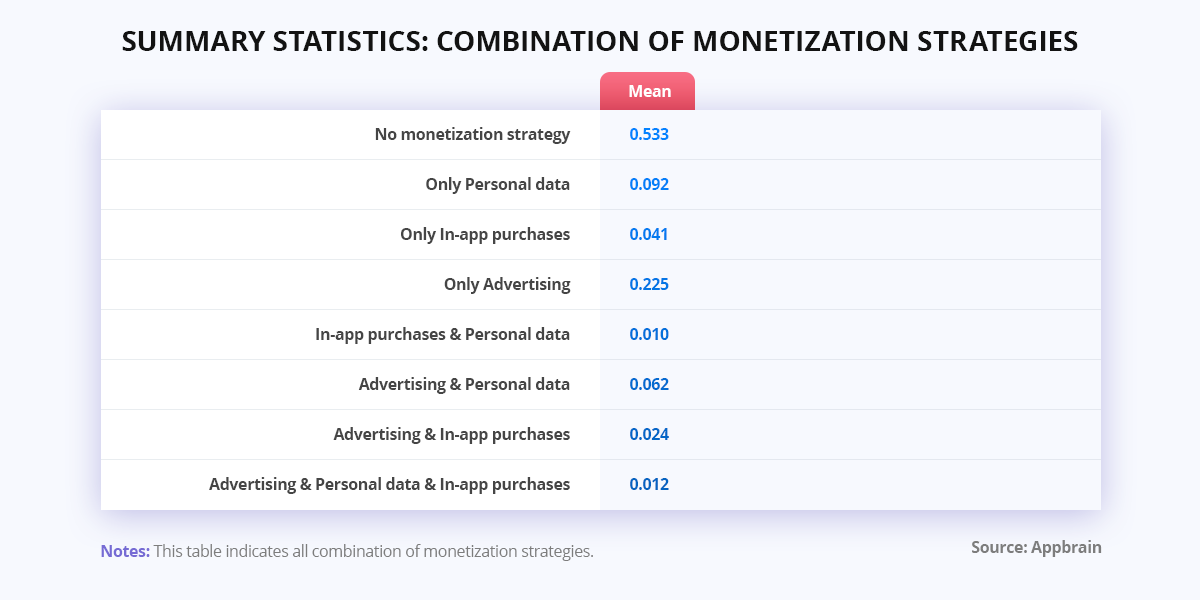
According to Research Gate statistics, the number of downloads significantly affects the monetization strategy that the application developer chooses.

Why is the monetization of user data found among these strategies? Surprisingly, American developers finally understood its real advantages. Properly configured data monetization gives a stable passive income to the developer. In order to understand how to work with each of the three strategies, I propose to compare the advantages and disadvantages of each of them.
In-app advertising
Advertising in the application is considered a universal way of monetization for all free applications. Advertising formats evolve towards the native to engage the user, while remaining as unobtrusive as possible.
However, the growth of the mobile advertising industry has also attracted fraudsters who offer higher CPM prices for showing questionable ads. Mobile fraud affects the entire industry: advertising networks, advertisers and application owners are constantly introducing new standards for testing traffic purity and prefer to buy an audience, rather than dead souls (bots).
In addition, users still do not like advertising in applications, and here's why:
- There is no call to action: why click on an advertisement if it gives no value?
- Small size: the banners in the application are too small, they annoy users, while providing a zero conversion. Most clicks on such a banner are random and spoil the karma of the application. Use smart banners that adapt to the screen size.
- Bad UX in general: there is no button to close an advertisement, or buttons that you cannot hit with a finger (the so-called “fat finger”), the sound is turned on by default, etc. Bad advertising during maximum interaction in general can lead to the removal of the application.
- Zero relevance and zero trust: advertising donuts in a fitness application or a loan in an application for children is not uncommon. It is important to determine the type and scope of advertising that you are ready to show. Now less than 25% of users trust advertising in many respects because developers are partnering with questionable ad networks.
Give users a choice: advertising does not always have to appear unexpectedly.
Rewarded video, please take a survey and other options should be of real value to the user. 71% of users said they would rather watch the video than start shopping inside the app . The full checklist of how to set up in-app advertising correctly is here .
Monetization of user data
The essence of data monetization is the collection, analysis and transfer of non-personal user data to generate revenue from the application. For application developers, this is a good source of passive income and a real opportunity to make money on users.
Why do I speak non-personal? Because this type of data is the only monetization option that fully complies with the GDPR and Google policies.
With a minimum DAU 50 000+ and the presence of two or three hours, you can prepare an application for monetization. A full guide on this type of monetization is here , below I will go through what is necessary and what not to do.
Need to:
- Make sure you have a 50,000+ DAU. Low DAU application developers install an SDK for data monetization in the hope that this will bring them a fortune in the future. And disappointed.
- Before collecting data, you need to get a clear permission from the user to use his non-personal data.
- Combine data monetization with other monetization strategies.
Not necessary:
1. To condemn this method of monetization without understanding the subject. Monetizing user data only involves using non-personal user data such as screen size or Bluetooth connectivity, which are used by resellers and third parties only as quantitative data, which is why they pay less for them than for personal data.
2. Ignore additional application protection measures. This picture is ridiculous, but many application owners do not devote enough time to security, which can affect users.
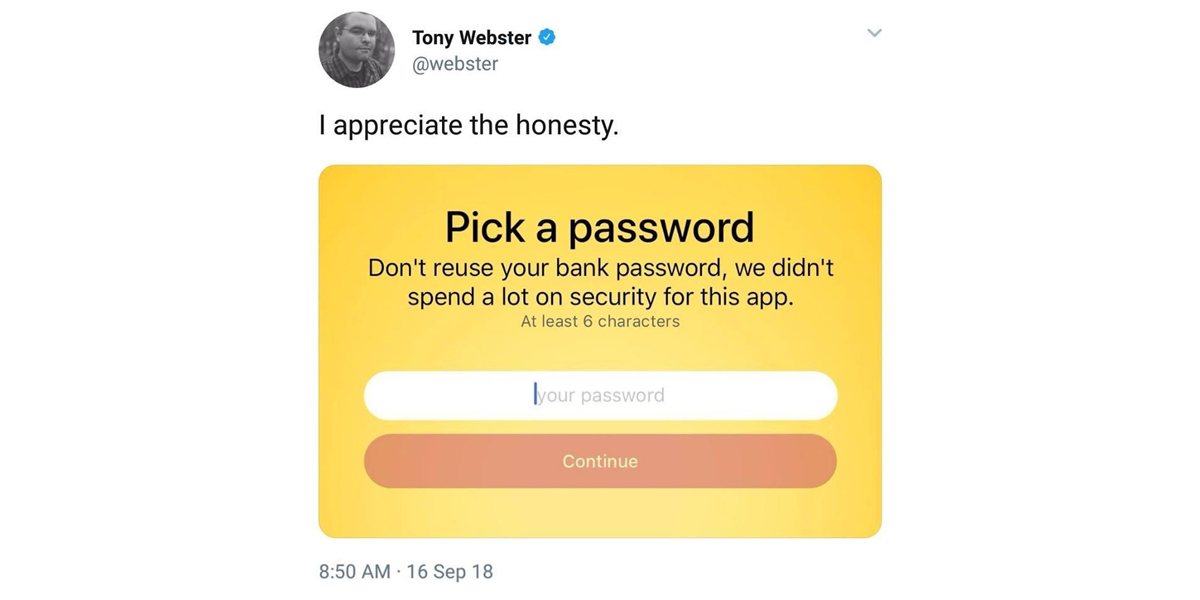
3. Strive to do everything at once. The desire for more profit pushes some developers to transfer some personal data with non-personal user data in order to get at least 50% more. Recall the application 'Weather Forecast — World Weather Accurate Radar', which subscribed users to the paid version of the application without their consent .
Statistics show that 9.2% of applications use personal data as a monetization strategy, 6.2% of applications combine personal data with advertising, and 1.2% of developers combine all three monetization strategies.
In-app purchases
Despite the fact that only 5% of users spend money in the application, the total amount of income from purchases in applications is 20 times higher than the total profit of all other methods of monetization combined.
In-app purchases include access to unique features, virtual currency, additional health, the ability to use the app without ads, or any other bonuses that can be spent in the app.
Shopping inside the app works great if you put them in that part of the application where the user has already finished some action, but still remains involved. For example, the Candy Crush application has 23 localized versions. Represent the size of their audience? By offering users various shopping options in the app — extra lives or packages with gold bars, Candy Crush has turned some of its users into paid customers. Today, Candy Crush makes almost $ 1 million a day.
Another cool way to sell in-app purchases is to offer all premium features as a single package, as the guys from the 7-minute workout app did:

The competition among applications in appstores is incredible, so there’s no hope of random success there. But in the appstore, the rules of a regular store are valid: brands on the shelves do everything to force the buyer to choose their product before it leaves the store. The same with applications.
Source: https://habr.com/ru/post/446258/
All Articles